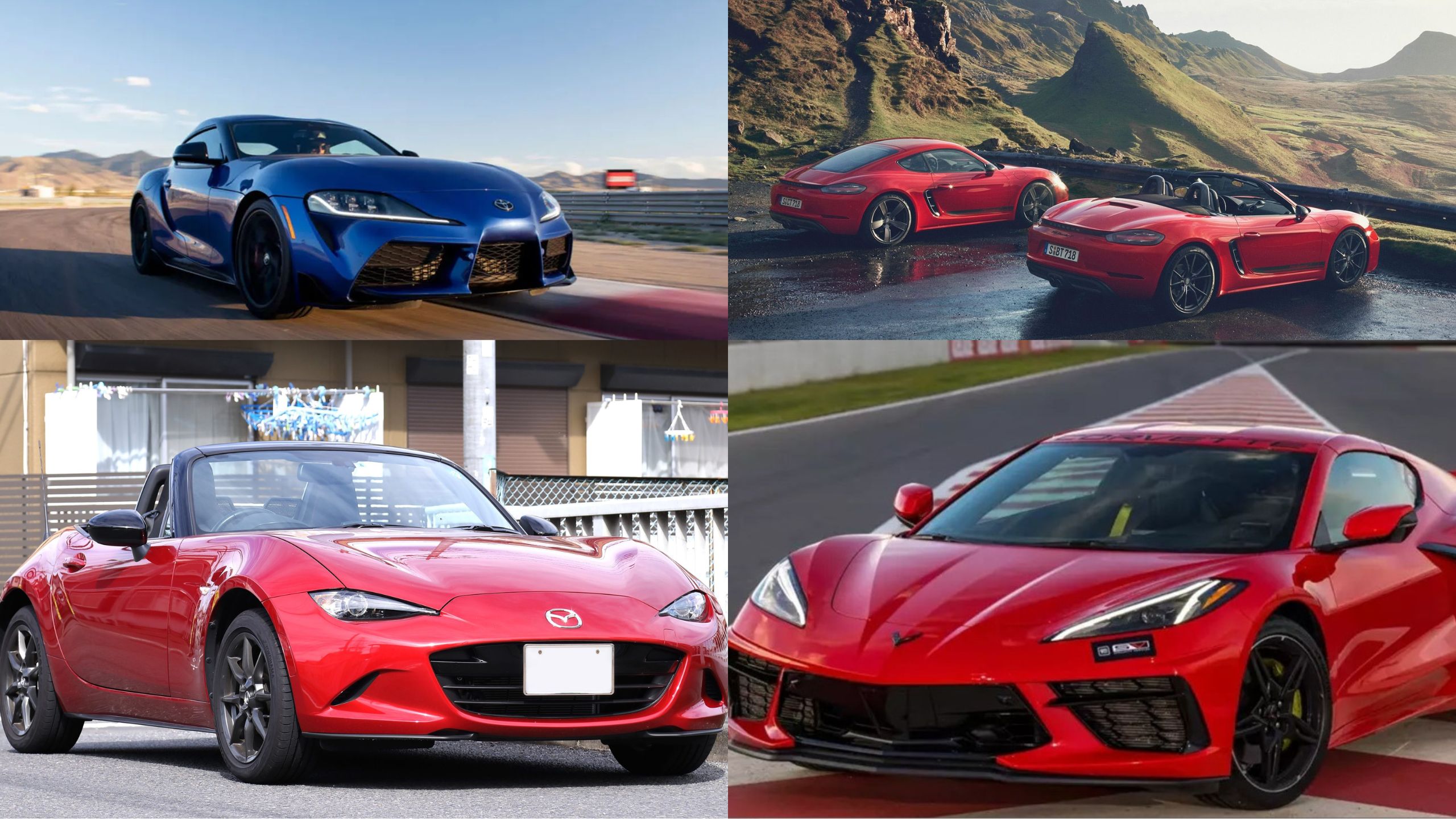When shopping for a sports car, performance often takes center stage the acceleration figures, top speed, and cornering capabilities that make these vehicles thrilling to drive.
However, reliability is an equally crucial factor that can significantly impact the ownership experience.
A sports car that spends more time in the repair shop than on the road quickly loses its appeal, no matter how impressive its specifications might be.
In this comprehensive guide, we’ll explore five sports cars known for their exceptional reliability, vehicles that deliver exhilarating performance without frequent trips to the mechanic.
We’ll also examine five sports cars that, despite their impressive capabilities, have developed reputations for problematic ownership experiences and frequent repairs.
By examining both ends of the reliability spectrum, prospective buyers can make more informed decisions when selecting a sports car that balances performance with dependability.
5 Reliable Sports Cars
After all, the most enjoyable sports car is one that’s ready to drive when you are.
1. Porsche 718 Cayman/Boxster
The Porsche 718 platform represents an engineering masterclass in balancing performance and reliability.
Unlike some exotic competitors, the mid-engine Cayman and Boxster models have consistently demonstrated excellent dependability across multiple generations, earning top marks in owner satisfaction surveys and reliability studies.
What makes these Porsches particularly impressive is how they maintain their reliability despite being genuine driver’s cars.
The flat-four turbocharged engines (and six-cylinder options in GTS and GT4/Spyder models) deliver robust performance while demonstrating remarkable mechanical resilience.
Porsche’s meticulous engineering approach means that owners can enjoy spirited driving without worrying about frequent breakdowns.
Maintenance costs, while higher than average family cars, remain reasonable within the sports car segment.

The platform benefits from Porsche’s extensive dealer network and well-documented service procedures.
Many owners report trouble-free ownership experiences well into high mileage territory, with proper maintenance being the key factor.
The electrical systems in the 718 series have proven particularly robust compared to competitors, with fewer issues related to infotainment glitches or sensor failures.
Suspension components are similarly durable, handling both daily driving and occasional track use without premature wear.
Perhaps most telling is the 718’s strong resale value, a direct reflection of its reputation for reliability and longevity.
For buyers seeking a sports car that delivers thrilling performance with minimal downtime, the Porsche 718 Cayman and Boxster represent a compelling sweet spot of excitement and dependability.
2. Toyota GR Supra
The revival of Toyota’s iconic Supra nameplate came with an interesting twist a partnership with BMW that worried some purists about reliability.
However, the GR Supra has defied skeptics by proving remarkably dependable, combining Toyota’s legendary reliability ethos with BMW’s performance expertise.
The B58 inline-six engine (shared with various BMW models) has proven surprisingly robust in the Supra application.
Early concerns about the BMW partnership affecting reliability have largely been unfounded, with the Supra benefiting from Toyota’s rigorous quality control standards.
The turbocharged powerplant delivers impressive performance figures while maintaining mechanical integrity even under spirited driving conditions.
Toyota’s influence is particularly evident in the careful tuning and calibration of components.
While sharing architecture with the BMW Z4, the Supra underwent extensive additional testing and refinement under Toyota’s supervision.
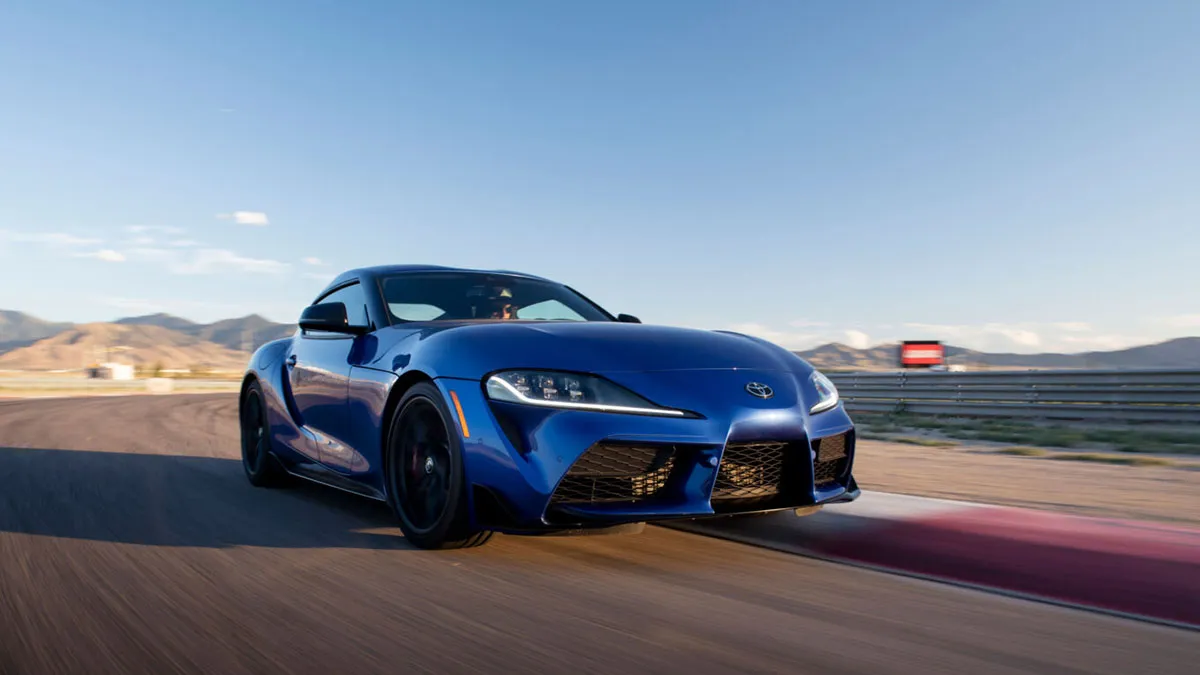
This dual development approach has yielded a sports car that combines German performance characteristics with Japanese reliability standards.
Owners report minimal issues with the eight-speed automatic transmission, which handles power delivery efficiently while avoiding the common problems associated with complex dual-clutch systems found in some competitors.
The electronics and infotainment systems, while BMW-derived, have also demonstrated good reliability, with fewer glitches than typically expected in new sports car models.
The GR Supra’s parts availability benefits from both Toyota’s vast dealer network and BMW’s established supply chain.
This means maintenance, while not as economical as a standard Toyota, remains reasonable for the performance segment.
For drivers seeking the excitement of a true sports car with the peace of mind associated with Toyota ownership, the GR Supra delivers a compelling and reliable package.
3. Mazda MX-5 Miata
The Mazda MX-5 Miata stands as perhaps the quintessential example of reliability in the sports car world.
Through four generations spanning over three decades, the Miata has maintained an exceptional reliability record while staying true to its pure sports car roots.
This lightweight roadster prioritizes driving engagement over raw power, and this focused engineering approach contributes significantly to its dependability.
The current generation ND Miata features naturally aspirated SkyActiv engines that exemplify mechanical simplicity and durability.
Without the added complexity of turbochargers or superchargers, these engines offer fewer potential failure points while still delivering spirited performance appropriate for the car’s lightweight chassis.
The manual transmissions are particularly noteworthy for their precise feel and long-term durability, often lasting well beyond 150,000 miles with proper maintenance.
Mazda’s approach to the Miata’s electrical systems similarly emphasizes reliability through simplicity.
While modern Miatas include contemporary features, they avoid overly complex electronics that plague some competitors.
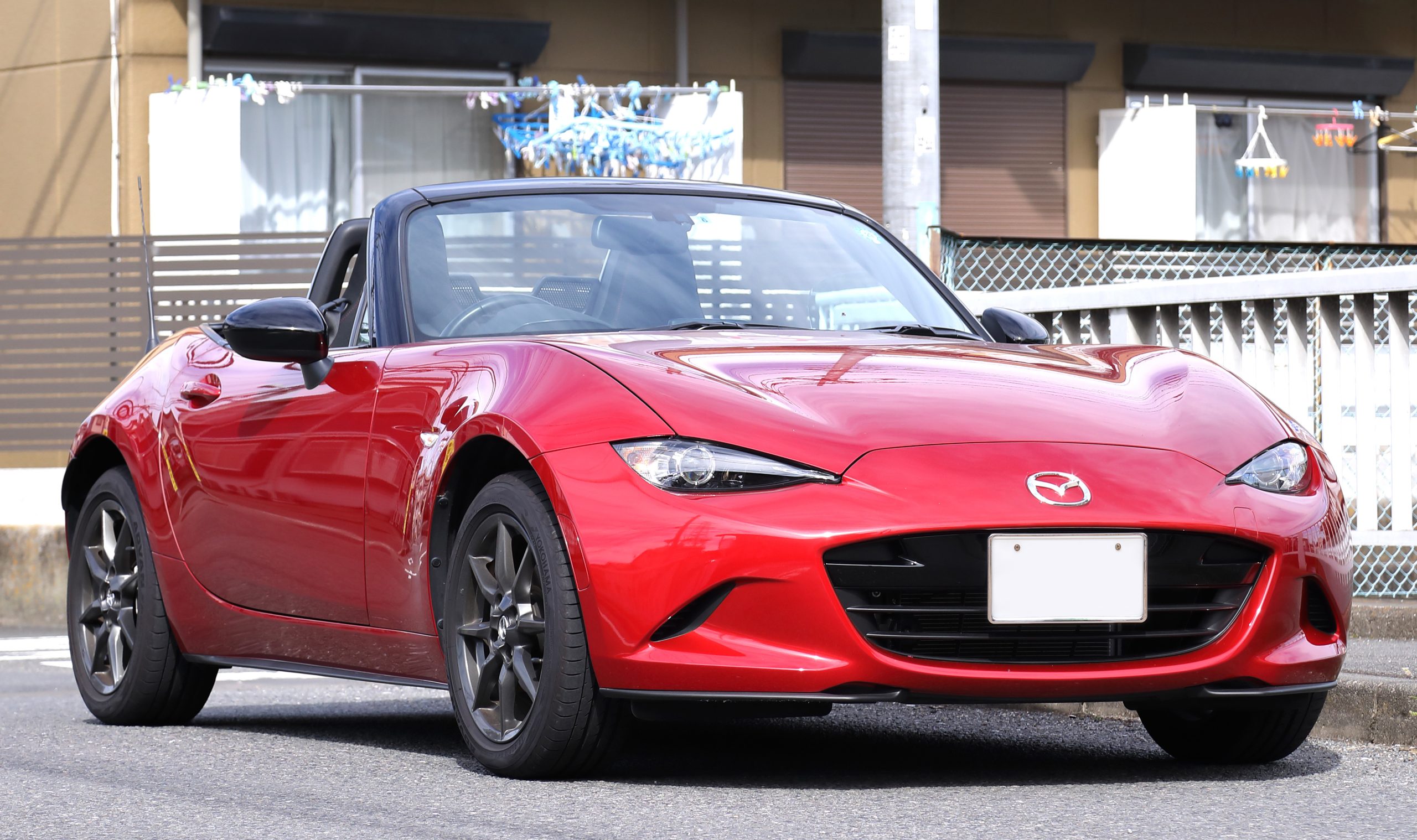
This balanced approach to technology helps prevent the electrical gremlins that often affect more complicated sports cars.
Ownership costs represent another Miata strength. Routine maintenance is straightforward and affordable, with parts widely available and reasonable labor costs due to good component accessibility.
Insurance rates tend to be lower than for more powerful sports cars, contributing to economical long-term ownership.
Perhaps most telling is how many high-mileage examples remain on the road. It’s not uncommon to find Miatas with 200,000+ miles still delivering driving joy to their owners.
This demonstrated longevity, combined with the car’s engaging driving dynamics, makes the MX-5 Miata a perennial favorite for enthusiasts who value both reliability and the pure sports car experience.
4. Chevrolet Corvette (C8)
The eighth-generation Corvette represents a revolutionary step for America’s sports car, adopting a mid-engine layout while maintaining the nameplate’s growing reputation for reliability.
Despite the significant architectural changes, the C8 Corvette has demonstrated impressive dependability that builds upon the improvements seen in later years of the front-engine generations.
At the heart of the C8’s reliability is the proven 6.2-liter LT2 V8 engine. This naturally aspirated powerplant delivers 495 horsepower in Z51 form while maintaining the robustness that has characterized GM’s small-block V8 lineage.
The decision to evolve a well-understood engine design rather than developing an entirely new powerplant has paid dividends in reliability, with owners reporting few significant mechanical issues even when enjoying the car’s considerable performance capabilities.
The bespoke eight-speed dual-clutch transmission developed specifically for the C8 initially raised concerns as a potential weak point.
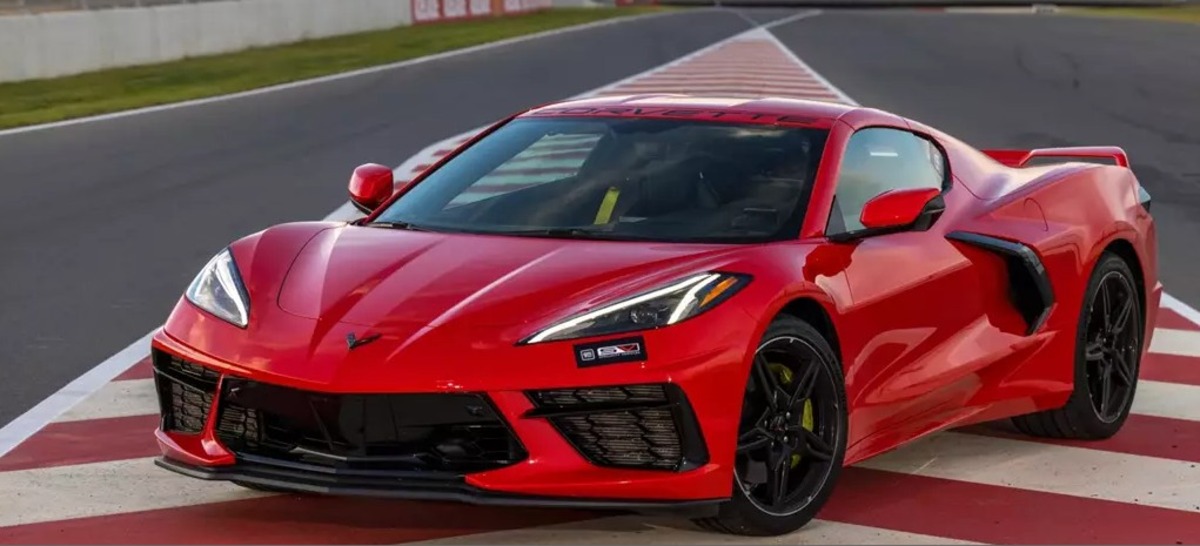
However, in practice, it has proven remarkably durable while delivering lightning-quick shifts that enhance the driving experience.
This transmission represents a significant improvement over the automatic options in previous Corvette generations.
Chevrolet’s extensive development and testing program for the C8 addressed many potential issues before production.
The electrical architecture and cooling systems received particular attention given the challenges of the mid-engine layout.
The result is a complex but well-engineered system that maintains reliability despite the car’s performance envelope.
Equally important for ownership experience is the vast dealer network and parts availability that comes with the Chevrolet badge.
While maintenance costs are higher than average family vehicles, they remain reasonable within the high-performance sports car segment.
For buyers seeking supercar-adjacent performance with American reliability and serviceability, the C8 Corvette delivers an impressive combination of excitement and dependability.
Also Read: 10 Automakers With the Most Million-Mile Club Members
5. Audi TT RS
The Audi TT RS stands as a compelling example of German engineering delivering high performance with surprising reliability.
Powered by a turbocharged five-cylinder engine producing over 400 horsepower, the TT RS delivers supercar-like acceleration figures while maintaining a level of dependability uncommon in the high-performance segment.
The 2.5-liter five-cylinder engine at the heart of the TT RS has proven remarkably robust despite its high specific output.
Audi’s extensive development of this distinctive powerplant has yielded a design that handles significant power while avoiding many common issues associated with highly stressed turbocharged engines.
The unique five-cylinder configuration provides character through its distinctive sound while delivering reliable performance across a broad RPM range.
Audi’s Quattro all-wheel-drive system in the TT RS benefits from decades of refinement, resulting in a drivetrain that handles tremendous power delivery without developing the issues that plague some competitors’ complex transmission systems.
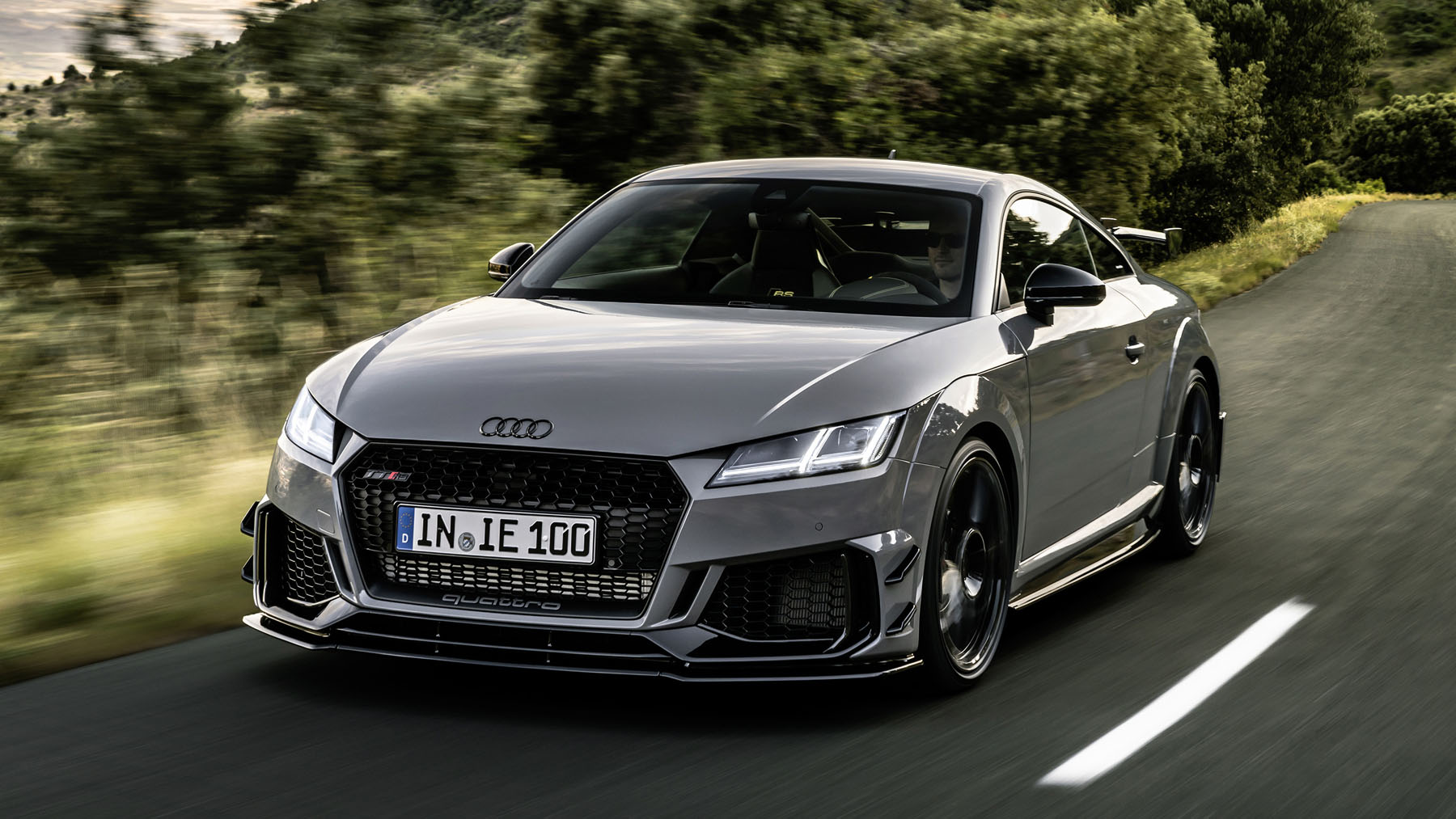
The dual-clutch transmission option has similarly demonstrated good longevity when properly maintained, managing quick shifts without the reliability concerns that affected some earlier iterations of this technology.
The TT RS benefits from Audi’s build quality, with excellent fit and finish that contributes to long-term durability.
Interior components wear well, and the electrical systems demonstrate better reliability than many sports cars in this performance category.
While electronics can be complex, they typically avoid the frequent failures that affect some rivals.
Maintenance costs, while higher than mainstream vehicles, remain reasonable compared to exotic sports cars offering similar performance.
The TT RS also benefits from Audi’s established dealer network and parts availability.
For drivers seeking a unique combination of distinctive driving character, exceptional performance, and better-than-average reliability in the sports car segment, the Audi TT RS represents a compelling option that delivers thrills without excessive downtime.
5 Unreliable Sports Cars
1. Alfa Romeo 4C
The Alfa Romeo 4C captures hearts with its exotic carbon fiber monocoque construction, distinctive styling, and pure driving experience.
However, this Italian beauty exemplifies the traditional sports car tradeoff between character and reliability, with owners frequently reporting issues that keep this lightweight sports car in the repair shop far too often.
The 4C’s 1.75-liter turbocharged four-cylinder engine delivers impressive performance for its size but suffers from multiple reliability concerns.
Owners frequently report issues with the turbocharger system, cooling problems in high-performance driving scenarios, and oil consumption rates that exceed what would be considered reasonable even for a high-performance vehicle.
These engine issues can lead to expensive repairs that are exacerbated by the limited dealer network in many markets.
Electrical problems represent another significant pain point for 4C ownership.
The car’s complex systems frequently develop gremlins ranging from dashboard warning lights appearing without cause to more serious issues affecting engine management and performance.
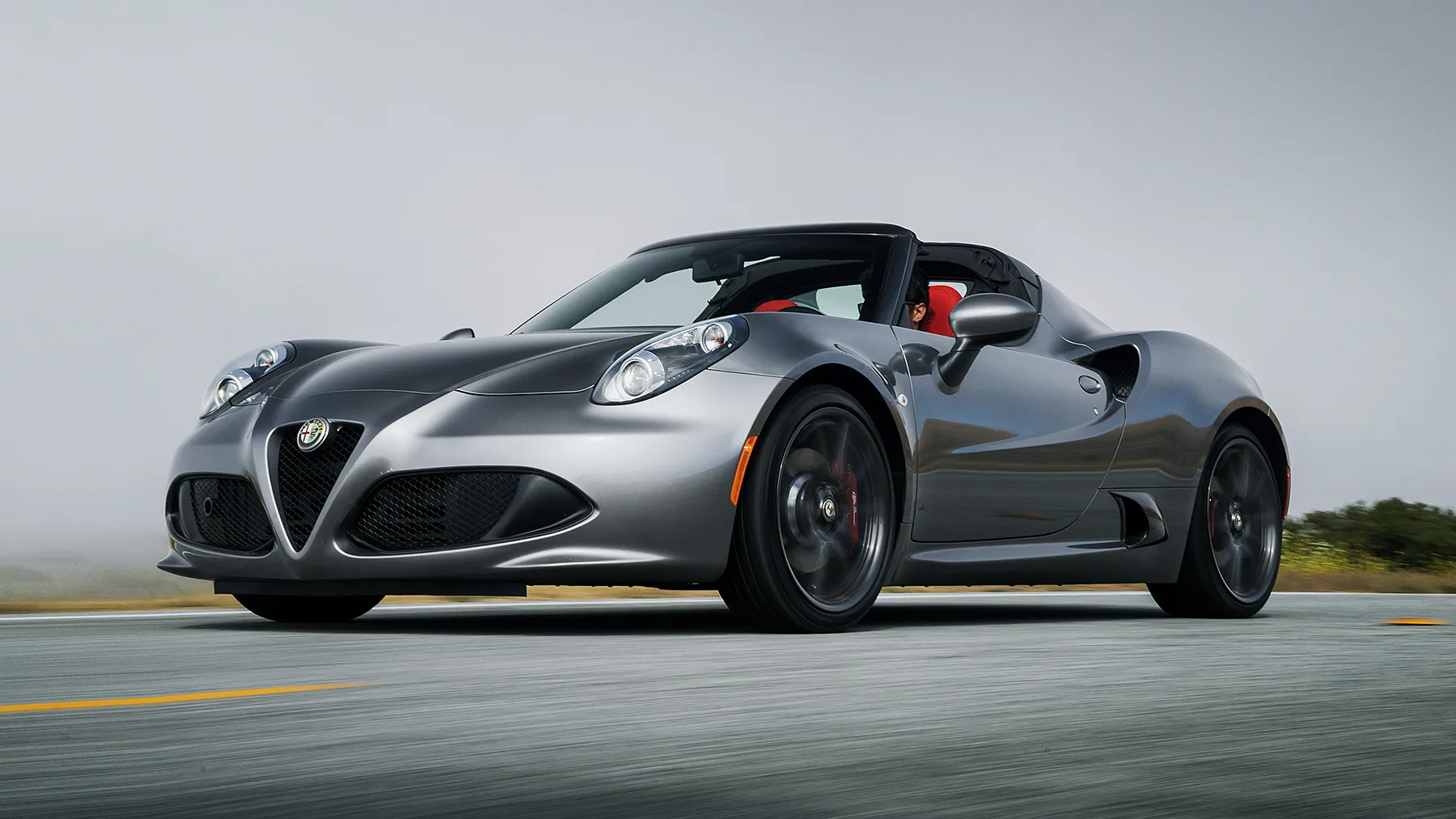
These electrical quirks can be particularly frustrating as they often prove difficult to diagnose consistently, even for dealership technicians.
The 4C’s dual-clutch transmission, while delivering lightning-quick shifts when functioning properly, has developed a reputation for reliability issues including rough engagement, occasional failure to select gears, and expensive repair bills when problems do occur.
These transmission concerns represent a significant ownership risk given the specialized nature of the components and limited repair options.
Parts availability adds another layer of complication to 4C ownership. The specialized nature of many components means longer wait times for repairs and higher costs when parts do become available.
The limited production numbers of the 4C exacerbate this issue, with some owners reporting weeks or even months of waiting for critical components to arrive.
While the Alfa Romeo 4C delivers an intoxicating driving experience with its direct steering, responsive chassis, and exotic construction, prospective owners should approach with realistic expectations about reliability and be prepared for higher-than-average maintenance costs and potential downtime.
2. Maserati GranTurismo
The Maserati GranTurismo represents Italian automotive art with its breathtaking Pininfarina-designed bodywork and soul-stirring Ferrari-derived V8 engine.
However, beneath the beautiful exterior lies a troublesome ownership experience characterized by frequent mechanical and electrical issues that can quickly transform automotive passion into frustration.
At the core of the GranTurismo’s problems is a complex electrical system prone to numerous failures.
Owners regularly report issues ranging from malfunctioning infotainment systems and erratic climate controls to more serious problems affecting engine management.
These electrical gremlins can be particularly difficult to diagnose, often requiring multiple dealer visits to resolve even seemingly minor issues.
The car’s intricate wiring harnesses and control modules represent a significant reliability liability throughout the ownership experience.
The Ferrari-derived 4.7-liter V8 engine, while magnificent in sound and character, demands meticulous maintenance with costly service intervals.
Even with proper care, many owners report oil leaks, cooling system failures, and premature wear of engine components.
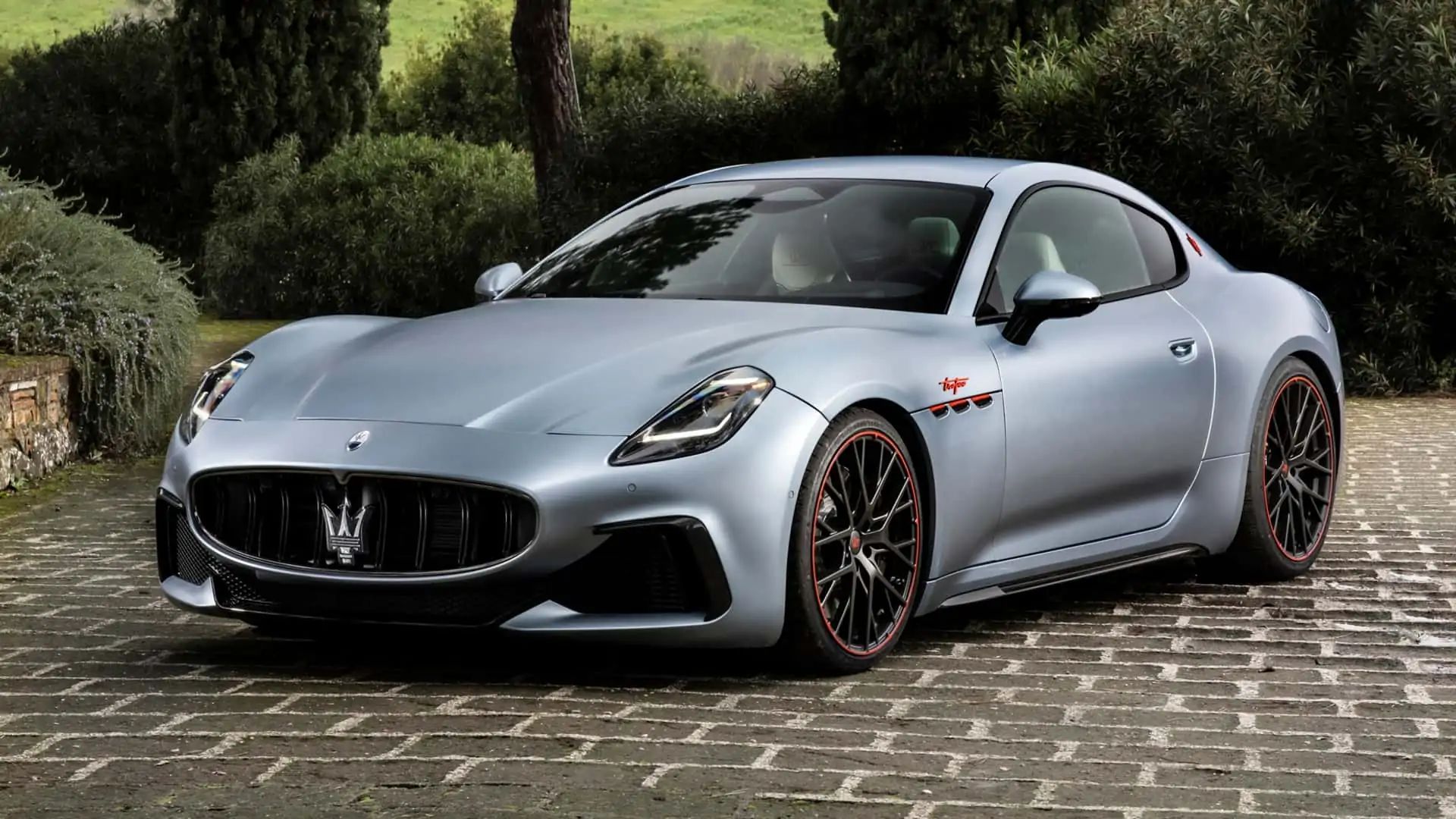
The automated manual transmission found in earlier models is particularly problematic, with clunky operation when new that only deteriorates with age, often requiring expensive rebuilds well before comparable transmissions from other manufacturers.
Interior quality represents another concern area, with materials that look spectacular when new but frequently develop wear issues, rattles, and squeaks at relatively low mileages.
Leather surfaces, trim pieces, and control interfaces often deteriorate more quickly than expected for a vehicle in this price category, adding to the mounting maintenance costs.
Perhaps most challenging for GranTurismo owners is the limited dealer network and parts availability in many markets.
This infrastructure limitation amplifies the impact of reliability issues, with repairs often taking significantly longer than would be expected for mainstream vehicles.
The specialized nature of many components means higher parts costs and fewer qualified technicians capable of properly addressing problems.
Despite its undeniable beauty and emotional appeal, the Maserati GranTurismo represents a significant reliability risk that prospective owners should approach with open eyes and the financial resources to address the inevitable issues that will arise during ownership.
3. Jaguar F-Type (Early Production)
The Jaguar F-Type stunned the automotive world with its gorgeous styling, exceptional handling, and spine-tingling exhaust note when introduced.
However, particularly in early production years, this British beauty hid numerous reliability issues beneath its seductive exterior that have resulted in frustrating ownership experiences for many buyers.
Early F-Types suffer from a variety of electrical problems that range from annoying to potentially dangerous.
The infotainment system, in particular, has been a source of constant irritation, with frequent freezes, system crashes, and Bluetooth connectivity issues that persist even after software updates.
More concerning are the electrical faults affecting critical vehicle systems, including sporadic check engine lights, random activation of safety systems, and occasional complete electrical shutdowns requiring roadside assistance.
The supercharged V6 and V8 engines, while magnificent in performance and sound, have demonstrated several recurring issues.
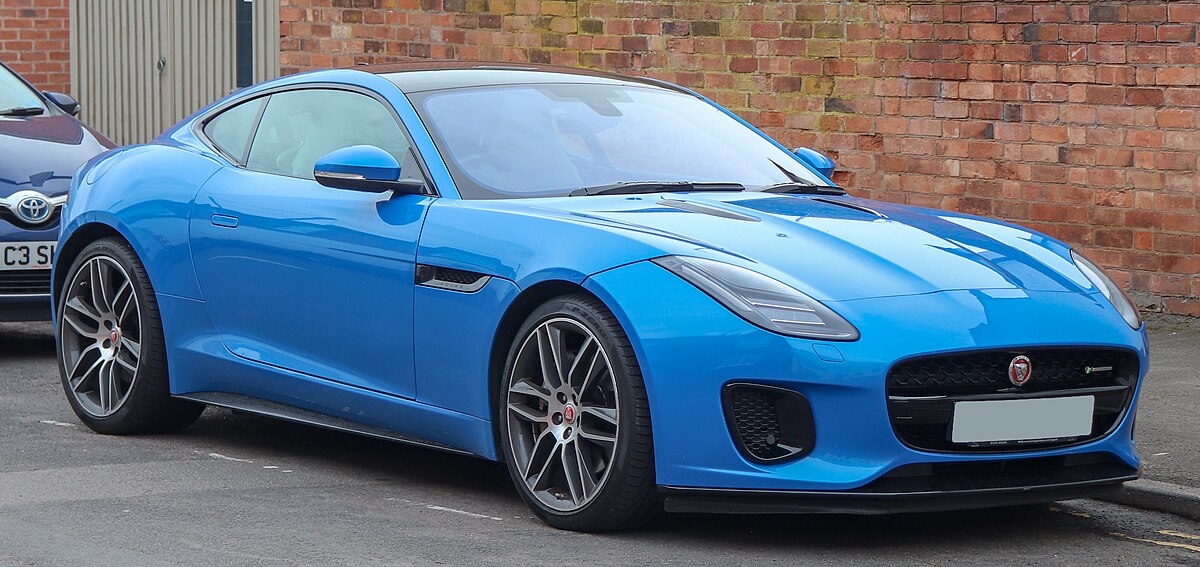
Oil consumption rates exceed what would be considered normal even for high-performance vehicles, and cooling system components have proven vulnerable to premature failure, particularly when the car is driven enthusiastically as intended.
The complex supercharger systems add another potential failure point, with repair costs often reaching eye-watering figures when problems do occur.
Transmission reliability represents another F-Type weak point, with both the automatic and manual options developing issues more frequently than comparable systems from competitors.
The eight-speed automatic can develop harsh shifting characteristics and occasional slippage, while clutch replacement intervals for manual models are notably shorter than expected based on mileage.
Interior quality and durability fall short of the premium expectations set by the F-Type’s price point.
Many owners report premature wear on seating surfaces, loose trim pieces, and climate control systems that struggle to maintain consistent temperatures.
These quality issues compound the more serious mechanical concerns to create an ownership experience that can quickly become frustrating.
While Jaguar has addressed many issues in later production years through running changes and updates, early F-Types remain reliability gambles that often require significant financial investment to maintain in proper working order.
The car’s undeniable character and performance capabilities come with a reliability asterisk that potential owners should seriously consider.
4. BMW M4 (F82 Generation)
The BMW M4 represents the evolution of the iconic M3 coupe tradition with its twin-turbocharged straight-six engine and track-focused capabilities.
However, the F82 generation (2014-2020) has developed a concerning reliability record that contradicts BMW’s engineering reputation, with numerous owners reporting expensive problems requiring significant workshop time.
The S55 twin-turbocharged engine at the heart of the M4 has demonstrated several recurring issues.
Oil consumption rates well above normal parameters affect many examples, with some owners reporting a quart consumed every 750-1,000 miles.
More concerning are the documented cases of connecting rod bearing failures, a particularly expensive repair that can cascade into complete engine replacement when bearing material contaminates the oil system.
Coolant system components, including water pumps and thermostats, also fail with concerning frequency, leading to overheating risks if not addressed promptly.
The carbon fiber driveshaft, while innovative for weight savings, has proven problematic in real-world use, with some examples developing vibrations or requiring replacement well before expected service intervals.
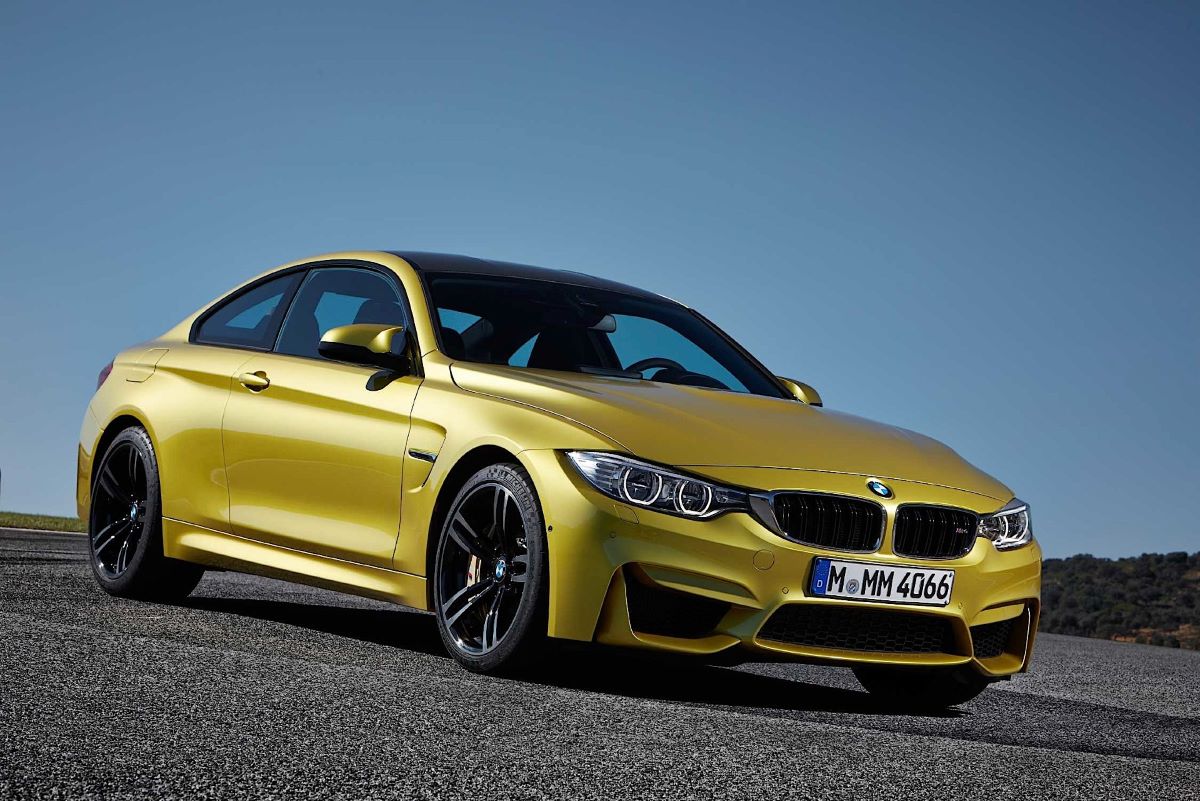
Similarly, the complex dual-clutch transmission (DCT) option experiences more frequent issues than comparable systems, including electronic control unit failures and clutch wear that exceeds expectations based on mileage and driving style.
Electrical systems represent another significant pain point for F82 M4 ownership. The complex network of sensors, modules, and control units frequently develops faults that can be difficult to diagnose conclusively.
These electrical gremlins manifest in various ways, from non-functioning convenience features to performance impacts when engine management systems encounter sensor irregularities.
While BMW’s dealer network provides reasonable support, maintenance and repair costs substantially exceed expectations even for a performance vehicle.
The specialized nature of many M-specific components means higher parts prices and labor rates, with routine maintenance schedules more intensive than standard BMW models.
The cumulative effect of these various reliability concerns creates an ownership experience characterized by more workshop visits than many competitors require.
Despite its impressive performance capabilities and brand prestige, the F82 M4 represents a reliability risk that potential owners should carefully consider, particularly as these vehicles age beyond their original warranty periods and issues become more frequent.
5. Lotus Evora
The Lotus Evora represents a fascinating paradox in the sports car world a vehicle that delivers perhaps the purest driving experience available, with steering feel and chassis balance approaching perfection, yet simultaneously frustrates owners with persistent reliability issues that can turn ownership into an exercise in patience and financial endurance.
At the core of many Evora reliability concerns is a surprisingly troubled Toyota-sourced 3.5-liter V6 engine.
While Toyota engines typically represent reliability benchmarks, the Lotus implementation with supercharging in S models introduces numerous potential failure points.
Cooling system inadequacies plague many examples, with overheating incidents reported even in moderate driving conditions.
The supercharger system, in particular, develops issues including belt failures and bearing problems that can lead to expensive repairs beyond what would be expected from a Toyota-based powertrain.
Electrical systems represent perhaps the Evora’s greatest reliability weakness. The complex network of sensors, control modules, and wiring harnesses frequently develops faults that challenge even experienced technicians to diagnose.
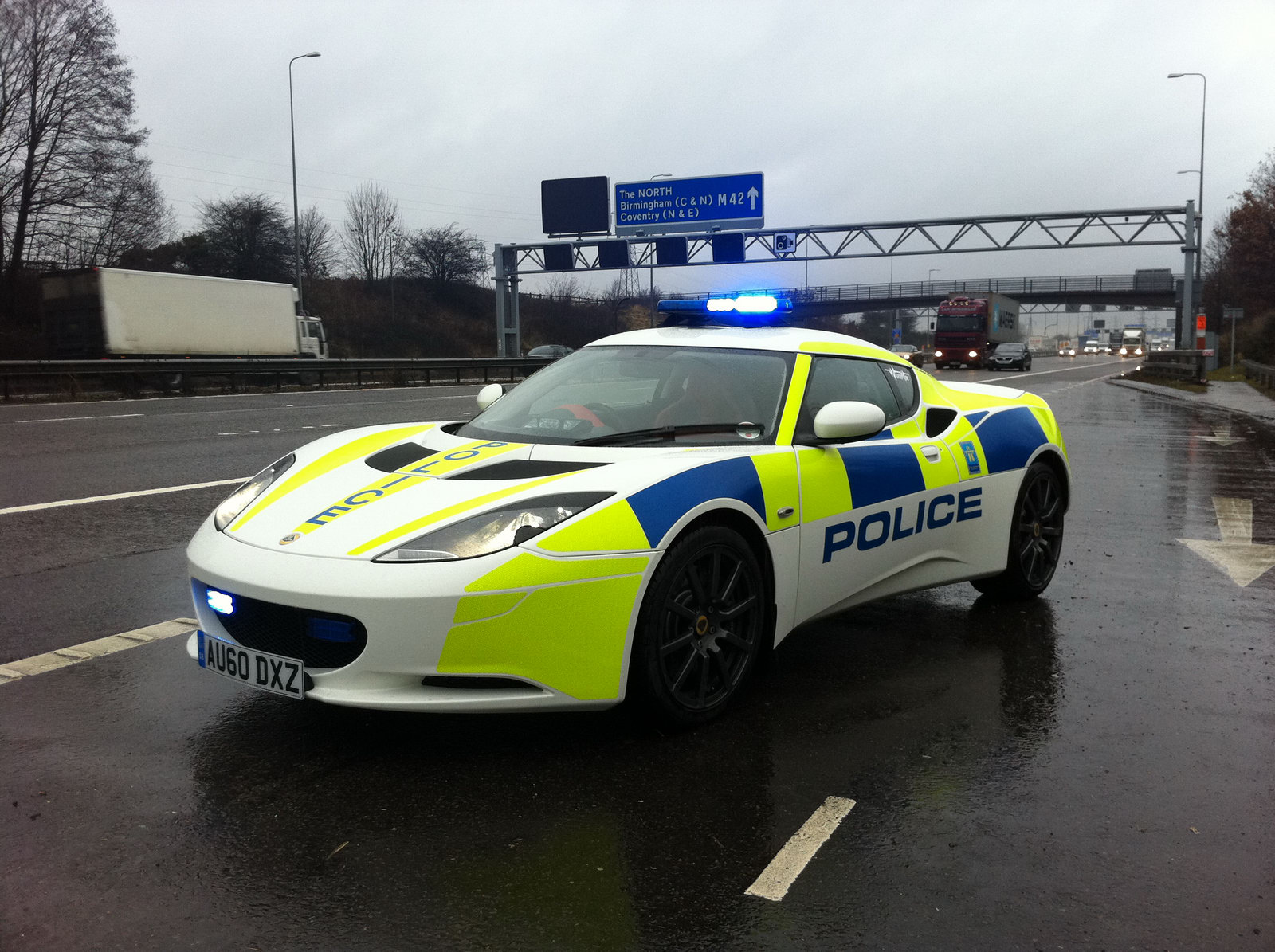
These electrical gremlins manifest in various ways, from illuminated warning lights and intermittent starting issues to complete system failures requiring extensive troubleshooting.
The limited dealer network in most markets compounds these problems, with owners often struggling to find qualified technicians familiar with Lotus-specific systems.
Interior quality and weatherproofing present additional ownership challenges.
Water leaks are distressingly common, with rainwater intrusion causing both immediate discomfort and long-term damage to electronic components and interior materials.
Trim pieces often work loose over time, creating rattles and squeaks that contradict the car’s premium price point.
Perhaps most challenging for Evora owners is parts availability. The limited production numbers and specialized nature of many components mean extended wait times for repairs, with some owners reporting vehicles sidelined for weeks or months awaiting parts from the UK.
These delays transform what might be minor issues in mainstream vehicles into significant ownership frustrations.
While the Lotus Evora delivers an unmatched driving experience when everything works properly, prospective owners should approach with realistic expectations about reliability and the commitment required to maintain these specialized machines.
The transcendent handling and driver engagement come with significant reliability compromises that demand both patience and financial resources to manage effectively.
Also Read: 12 Cars With the Highest Owner Retention After 10 Years

